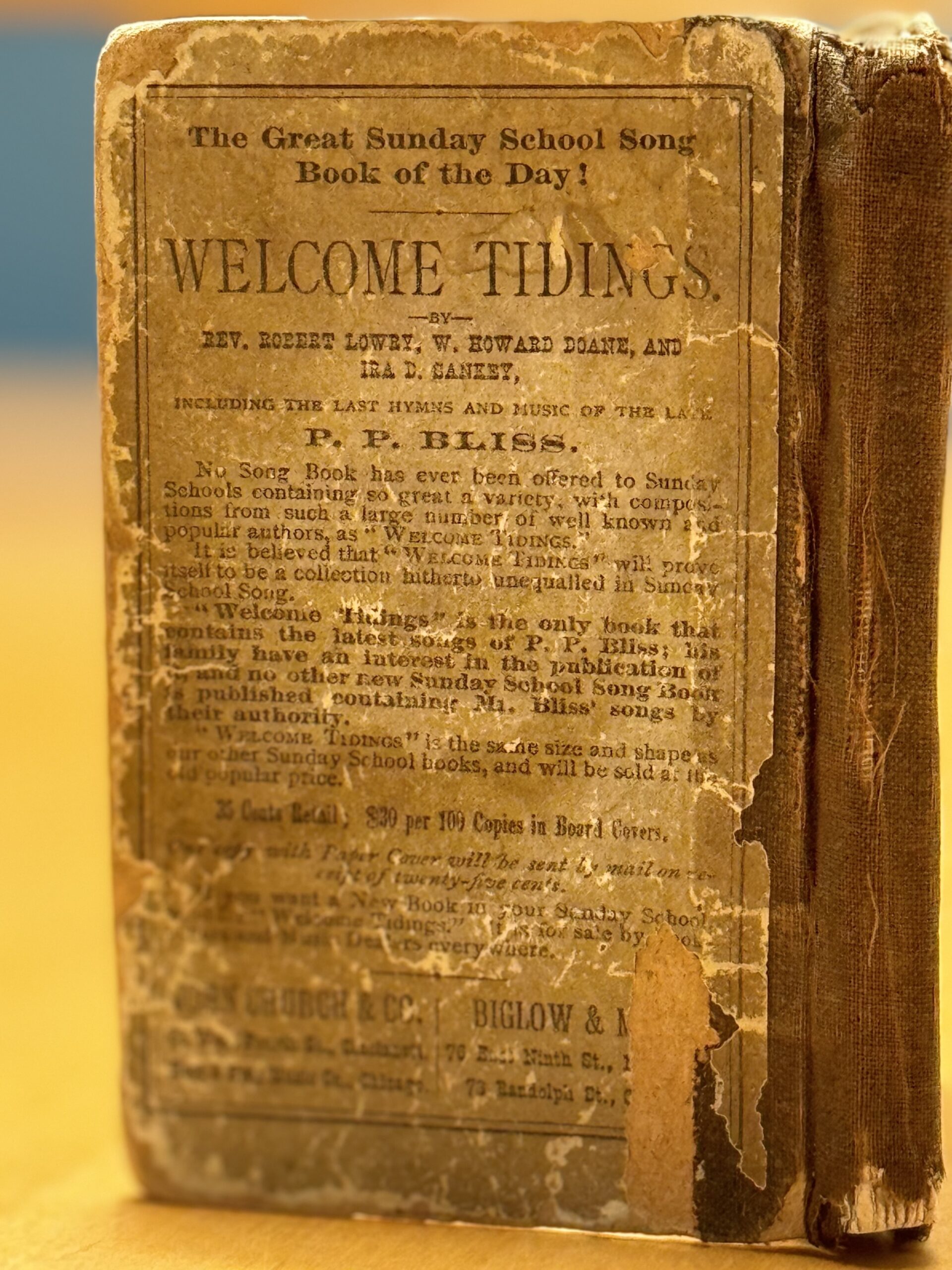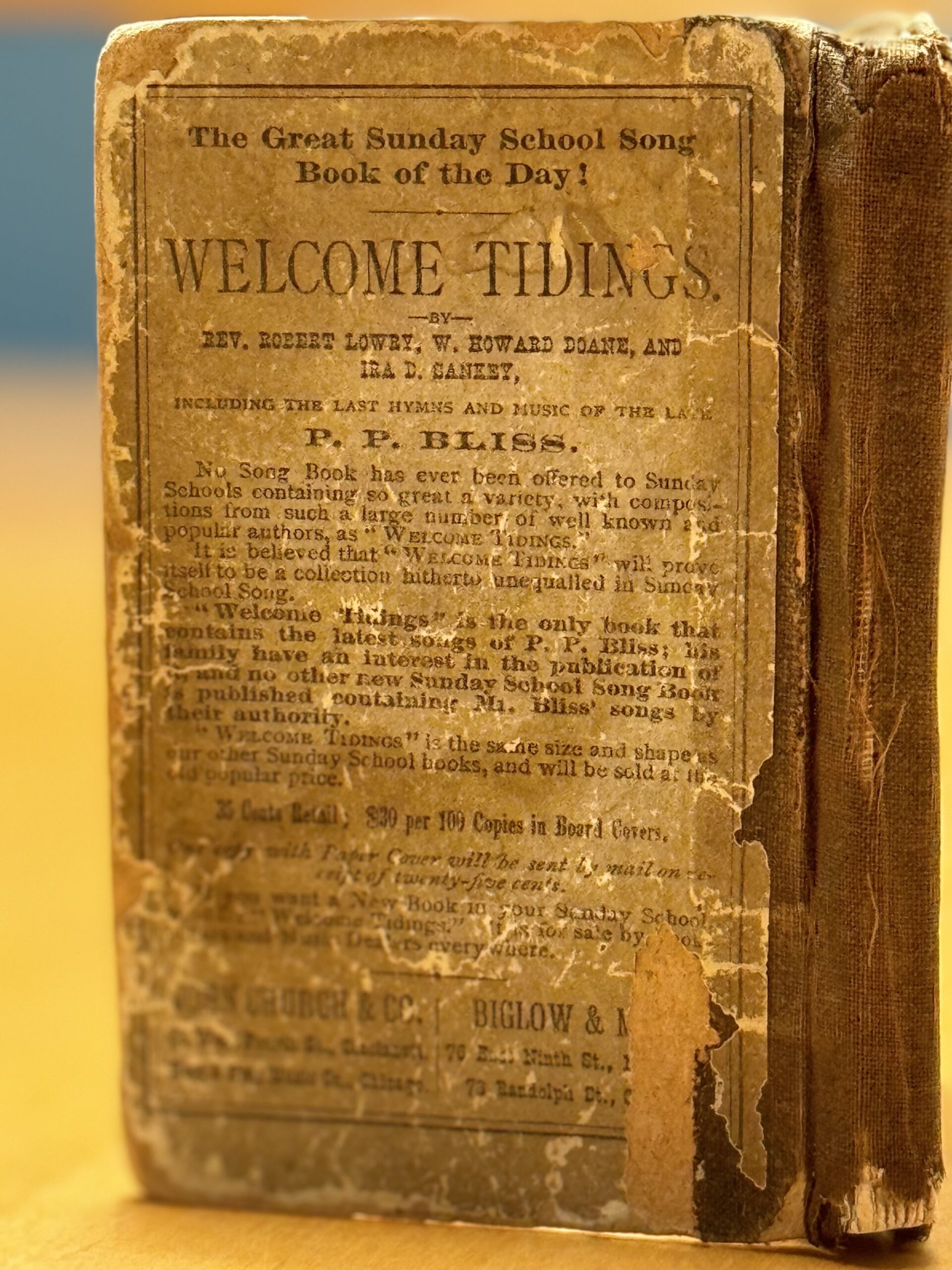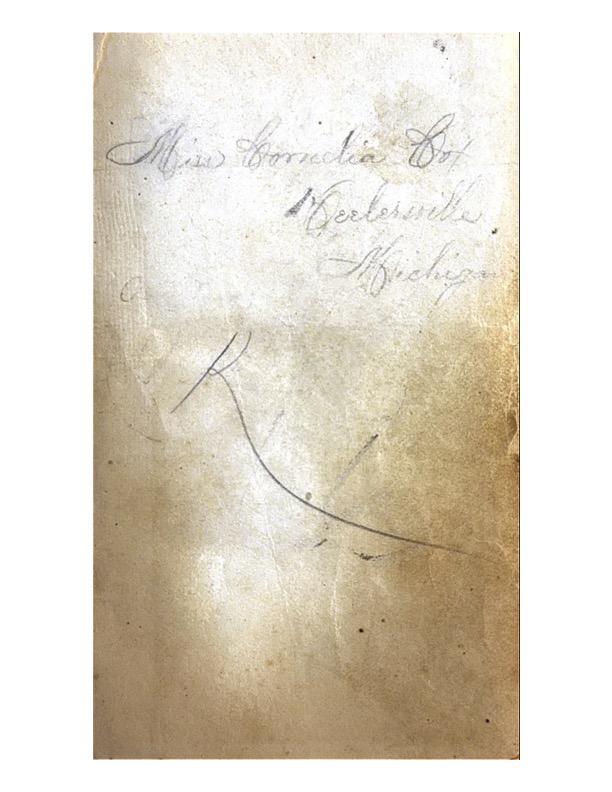Nestled in between the dust jacket and cover page of “Gospel Hymns Combined” rests the calling card of a familiar donor to the Dickinson College Archives (figure 1). George Alan, professor of philosophy and theology from 1963 to 1974, subsequently served his community as dean of Dickinson College until 1996 with a brief one-year stint as interim president after his predecessor had resigned his duties in the winter of 1986.
After completing a four year degree at Grinnell, he earned a master’s degree in systematic theology at Union Theological Seminary and then a Ph.D in Philosophy at Yale. Dr. George Alan maintained a special fascination with the spiritual throughout his entire life, further noted by his membership in the Metaphysical Society of America. Prototypically scholarly, the gentle lines of wisdom that would one day wrinkle his brow would begin taking root in 1935 at the bleak cold of dawn of the blistering winter plains of North Dakota (figure 2). Dr. Alan notes in an autobiographical sketch from 2012 that his Whiteheadian interpretation of life was rooted in “North Dakota realities,” primarily due to the Depression era mentality of his family, “celebrating the good things when they came and when they were gone rejoicing that once, uniquely and fortunately, they had been.”
Whitehead’s doctrine emphasizes the importance of subjective experience, arguing that subjective experience is not just a byproduct of how biological processes sense an objective reality and that the relationships that arise from intertwining subjective experiences are the basis of reality. That these subjective experiences are a result of the inherent consciousness of humans given by God “the supreme receiver,” who gathers these consciousnesses and responds to them in a process. However, Dr. Allan takes this sensibility a step further.
Interviewing Dr. Allan as his quaint home in Mechanicsburg, Pennsylvania, I was stirred by his contention that “God is directive, but not commander,” in that the concept of “God” was created by our subjective experiences to embody what a society deems as “right” offering subconscious guidance in the direction of “good” and away from “wrong.” That is not to say that Dr. Allan was insistent on minimizing those who are religious by any stretch of the imagination. In fact, he made sure to mention that he was good friends with a great many followers of the Western religions, many of whom were colleagues who he “misses dearly,” and that he has a great respect for the East Asian religions (which he mentioned embody the idea of God as a conceptual directive rather than personal God). In fact, he had a great reverence for one minister in particular, his father.
George Allan’s deep fascination with theology most likely came from his father, all though he made no literal claims of such in my interview. His father, born ino American citizenship in 1890 to Scottish parents in New York would find work in his young adult life with religious organizations before entering the seminary. Deemed unfit to serve in WW1, he would instead help survivors and refugees at the docks entering the New York harbor. Through this line of work he would eventually find his way into the Presbyterian church and would be sent out to Sioux Falls, South Dakota to minister there. Eventually however, he would come into disagreement with the Presbyterian Church and join the Shriners and Congregational church respectively in Grand Forks North Dakota, where George Allan would be born.

Figure 4: Torn Binding of “Gospel Hymns Combined,” 1890.
In his capacities as a member of the Shriners as well as a minister in the Congregational Church, Dr. Allan’s father could have been, as Dr. Allan stated in the interview, involved in Sunday school sessions in some capacity. The scribbles on the back flyleaf suggest that this was at one point in the hands of a child
suggested by tears on the back flyleaf (figure 3). The general wear and tear of the book could have been as a result of rough careless handling by a child or student, as the binding is torn and the front and back covers are degraded (figures 4, 5, and 6).
Since joining the Dickinson Archives, the book has not received any maintenance or repairs. The binding and boards are all original, and so are their damages. The paper is blotted and stained, yellow and brown as a result of many years of oxidation, and still torn. The fact that Dickinson has not given the book any special attention indicates that this book is not an inherently valuable text.
However, the lack of conservation or restoration efforts on the book does not diminish its historical value, nor its subjective value. While the written text has had no impact on American culture in a broad sense, it could have played in the life of George Allan’s father as well as the children who could have been handling the book during Sunday school. Dr. Allan mentioned that his father divvied up his library after he passed away between George Allan and his siblings. Among the books that he acquired, Dr. Allan donated a large portion of them to the Dickinson Archives, “Gospel Hymns Combined” presumably among them.
References
Waidner-Spahr Library. “George James Allan (1935-).” Dickinson College Archives & Special Collections. 2005 https://archives.dickinson.edu/people/george-james-allan-1935
George Allan. “Autobiographical Sketch.” Brill.com. 2012. https://www.google.com/url?sa=t&source=web&rct=j&opi=89978449&url=https://brill.com/previewpdf/book/edcoll/9789401210737/B9789401210737-s020.xml&ved=2ahUKEwjb2d7lnJGJAxXAq4kEHQodO6YQFnoECBUQAQ&usg=AOvVaw2RtSt7tsu97hWlsvf_RX7_


















